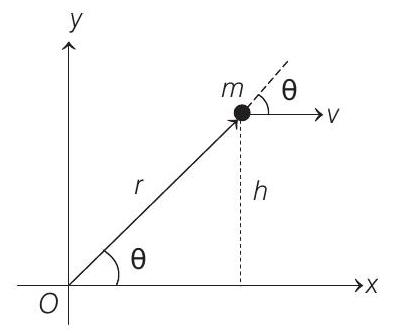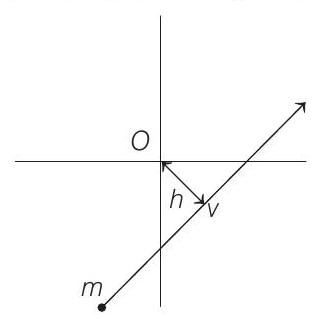Rotation 2 Question 12
12. A mass
(1997C, 1M)
(a) is zero
(b) remains constant
(c) goes on increasing
(d) goes on decreasing
Show Answer
Answer:
Correct Answer: 12. (b)
Solution:
Angular momentum of the particle about origin
Now,

Therefore, angular momentum of particle about origin will remain constant. The direction of
NOTE Angular momentum of a particle moving with constant velocity about any point is always constant. e.g. Angular momentum of the particle shown in figure about origin







